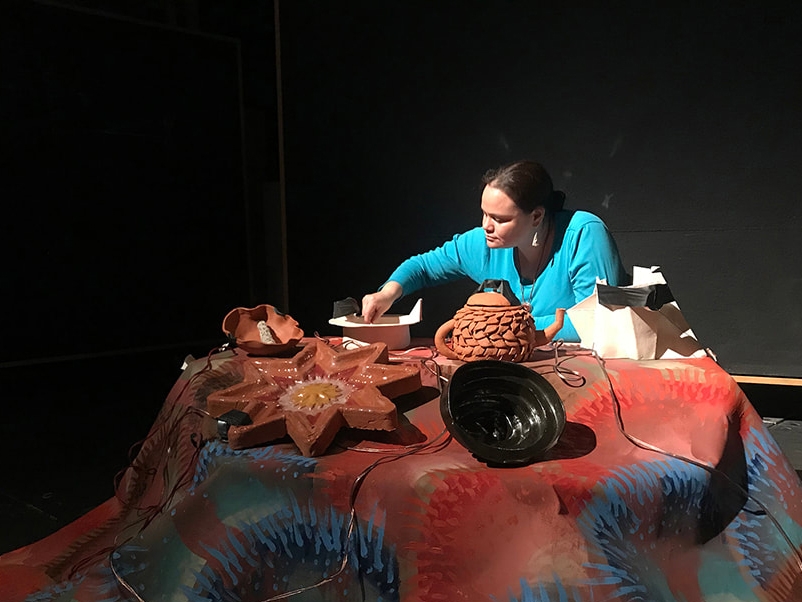Many of us have returned home after an arduous journey, only to have to socially distance ourselves from our family and isolate ourselves. At the same time, all of us, however distant from each other, come closer virtually on Zoom. Some of us live in foreign timezones whilst still following a schedule planned according to another one, changing the way we structure our own days. In this way, the epidemic has changed the way we live out lives, temporally and spatially. I wanted to communicate this idea and intervene in it because the disorientation of these changes can often make us feel disconnected from reality and from being present. So, I decided to create a soundtrack, accompanied with an instructional manual that guides listeners in performing activities that can help re-sync them. The activity involves producing a rhythm outside of the soundtrack and maintaining it whilst listening to the track using objects from around the home. This means the user is both listening to the stable rhythm that they are creating and the arhythmic soundtrack. This can either lead to disorientation (users rhythm changes to match the changing rhythm of the soundtrack) or complete focus (on ones own consistent rhythm in the face of a confusing one). However, the track offers moments of silence where users can become in-sync with the track, allowing them to regain their focus if they lose it. In the end, the user feels more present after focusing diligently. The track is also designed to represent the strange experience of the virus, allowing users to relate to the track and make peace with a 'new normal'. The soundtrack was created using found and recorded audio that was layered, repeated and slowed down to communicate a sense of monotony and chaos. The amplitude, reverb and binaural direction were experimented with to produce a sense of distance sonically. Users must use earphones so that the track is not overpowered by ambient sounds. The manual is printed on white printer paper in simple, black font since any embellishment would not add any content to the work. The rhythm can be created with almost any household item, making the project accesible, however there are recommendations to guide users. This project is a sound artifact that anyone can recreate in isolation within their homes. In this way, the project subverts the use of ordinary, household items to create a cathartic experience that is accesible by anyone. It also utilises noise and ordinary sounds to create rhythm and elicit an emotional response from the user. Moreover, it uses a characteristic of human sound perception (rhythm) to amplify the experience of the 'new normal'.

Responses